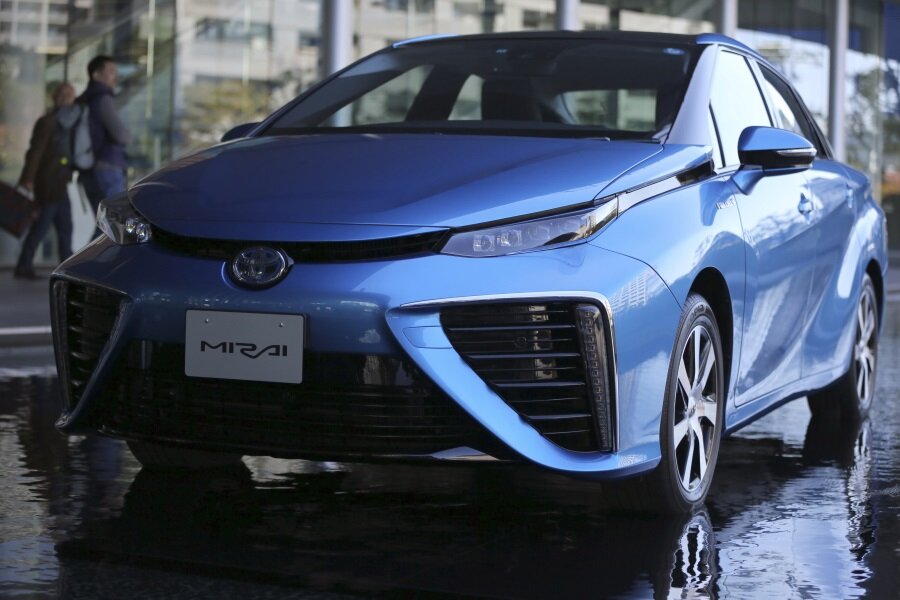Toyota Mirai review roundup: Toyota gambles on hydrogen power
Loading...
Toyota made waves in 2000 with the hybrid Prius, which went on to become the world’s best-selling hybrid vehicle. Now, with the unveiling of the Mirai sedan on Tuesday, Toyota is moving in an even greener direction. The company says the Mirai will be able to travel 300 miles on a full tank, and that it only takes five minutes to top off with hydrogen. Instead of greenhouse gases, the Mirai will emit only water vapor as it’s driven.
Here’s the catch: right now there are only 13 hydrogen stations in the US, so the Mirai represents a gamble that hydrogen fuel cell technology will take off commercially in the next few years.
Toyota has been allowing reviewers to test drive the Japanese version of the Mirai (the US model won’t launch until the second half of 2015) around downtown Los Angeles, and early reviews are overwhelmingly positive: the car is quiet, comfortable, and incredibly fuel-efficient, if a bit odd-looking. If fuel station infrastructure takes off, Toyota might even be able to replicate the success it had with the Prius. (Toyota is trying to get the ball rolling by subsidizing hydrogen stations in California and New England; it hopes to have at least 48 stations in California by the end of 2016.)
Chris Ziegler of The Verge describes his experience driving the Mirai as “a totally drama-free experience.” The car’s acceleration and handling aren’t anything special, he reports, but the interior is luxurious and extremely quiet (both because of cabin insulation, and because the Mirai is an electric vehicle). The cabin includes a control panel in the rear armrest to heat the car’s seats, several color displays, and “swoopy” dashboard panels. “If you like sitting in a Prius,” Ziegler concludes, “you'd love sitting in a Mirai.”
Susan Carpenter at the Orange County Register drove the Mirai past one of the handful of existing charging stations and reports that Toyota’s five-minute charging figure is accurate. She adds that “the weight of its fuel cell stack is centered and low, so it didn’t handle like a sled. That said, I was aware of its weight in the form of a solid ride that felt planted and responsive enough in the corners.” Carpenter also notes that the Mirai can be driven in either of two modes – Eco and Power. The Eco mode makes the car feel a little sluggish, she reports, but may be worth it for the added fuel efficiency.
Though the car runs on two tanks of compressed hydrogen – a potentially explosive scenario – Toyota has engineered the Mirai to minimize danger. The fuel tanks themselves are reinforced with Kevlar, and company engineers have even fired bullets into the tanks without rupturing them.
The biggest challenge facing the Mirai right now is the lack of fueling stations – but if hydrogen technology catches on, the Mirai could be a hit for Toyota. The car will cost $57,500 (although buyers will get an $8,000 tax credit, and California drivers will get an additional $5,000 rebate) and 300 will be available in the US and Europe next year.








